In This Program
The Concert
Wednesday, September 25, 2024, at 7:00pm
Esa-Pekka Salonen conducting
Lang Lang piano
Gina Alice piano
Sergei Prokofiev
from Romeo and Juliet, Opus 64 (1938)
Montagues and Capulets
Camille Saint-Saëns
Piano Concerto No. 2 in G minor, Opus 22 (1868)
Andante sostenuto
Allegro scherzando
Presto
Lang Lang
Sergei Prokofiev
from Romeo and Juliet
Death of Tybalt
Camille Saint-Saëns
The Carnival of the Animals (1886)
Introduction and Royal March of the Lion
Hens and Roosters
Wild Donkeys–Fleet Animals
Tortoises
The Elephant
Kangaroos
Aquarium
People with Long Ears
Cuckoo in the Depths of the Woods
Aviary
Pianists
Fossils
The Swan
Finale
Lang Lang
Gina Alice
This program is presented without intermission.
Program Notes
Selections from Romeo and Juliet
SERGEI PROKOFIEV
Born: April 23, 1891, in Sontsovka, Ukraine
Died: March 5, 1953, in Moscow
Composed: 1935–38
SF Symphony Performances: First—November 1943. Pierre Monteux conducted Suite No. 1. Most recent—February 2023. Esa-Pekka Salonen conducted.
Instrumentation: 2 flutes, piccolo, 2 oboes, English horn, 2 clarinets, bass clarinet, 2 bassoons, contrabassoon, tenor saxophone, 4 horns, 3 trumpets, 3 trombones, tuba, timpani, percussion (bass drum, church bell, cymbals, orchestra bells, snare drum, tambourine, triangle, wood block, and xylophone), harp, piano, celesta, and strings
Duration: About 20 mins
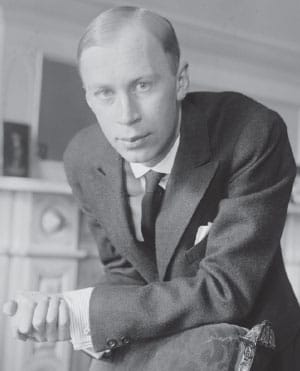
Romeo and Juliet is probably Prokofiev’s most loved score today, but its early history was not easy. After nine years of voluntary exile from Russia, mainly in the United States and Paris, Prokofiev was ready to come home. It was a difficult retransition. Russian audiences did not accept such works as The Buffoon and the Scythian Suite, which had been successful in Paris, but they loved the Violin Concerto No. 1, which Paris had rejected as too Mendelssohnian.
Toward the end of 1934, there was talk that the Kirov Theater in Leningrad (as it then was) might stage a ballet by Prokofiev. In his 1946 autobiographical sketch, Prokofiev wrote with characteristic detachment:
I was interested in a lyrical subject. Shakespeare’s Romeo and Juliet was suggested, but the Kirov backed out and I signed a contract with the Moscow Bolshoi Theater instead. In the spring of 1935, Radlov [Sergey Radlov, a theater director renowned for his Shakespeare productions] and I worked out a scenario, consulting with the choreographer [Leonid Lavrovsky] on questions of ballet technique. The music was written during the summer, but the Bolshoi declared it impossible to dance to, and the contract was broken.
There was quite a fuss about our attempt to give Romeo and Juliet a happy ending: Romeo arrives a minute earlier, finds Juliet still alive, and all ends well. The reason for this bit of barbarism was purely choreographic: the living can dance, the dying cannot . . . . After several conferences with the choreographer, it was found that the tragic ending could be expressed in dance after all, and in due course the music for that ending was written. . . .
The ballet itself was rather unlucky. In 1937 the Leningrad Ballet School signed an agreement undertaking to produce it on the occasion of its 200th anniversary, and in 1938 the Brno Opera agreed to stage it, too. The Ballet School violated its agreement, and so the premiere took place in Brno [Czechoslovakia] in December 1938. The Kirov produced the ballet in January 1940 with all the mastery for which its dancers are famed.
The excerpts we hear (Esa-Pekka Salonen’s own selections from the complete ballet music) reveal how a great composer shaped character, communicated emotion, and captured the dramatic sweep of one of the world’s great love stories.
—Michael Steinberg
Piano Concerto No. 2 in G minor, Opus 22
CAMILLE SAINT-SAËNS
Born: October 9, 1835, in Paris
Died: December 16, 1921, in Algiers
Composed: 1868
SF Symphony Performances: First—January 1913. Henry Hadley conducted with Frances Rock-Schafter as soloist. Most recent—July 2008. James Gaffigan conducted with Inon Barnatan as soloist.
Instrumentation: Solo piano, 2 flutes, 2 oboes, 2 clarinets, 2 bassoons, 2 horns, 2 trumpets, timpani, cymbals, and strings
Duration: About 25 mins
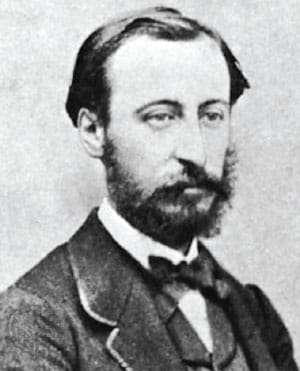
The pianist Camille Saint‑Saëns had in mind while penning the coruscating measures of the G-minor Concerto was of course his formidable self. The Piano Concerto No. 2 is the earliest work of Saint‑Saëns that we commonly hear, though by the time of its first performance, the impression made by his Symphony No. 1 had been consolidated by the Piano Trio in F and First Violin Concerto. The composition of the G-minor Piano Concerto came about because in 1868 the great Anton Rubinstein had given a cycle of eight concerto evenings in Paris with the 32‑year‑old Saint‑Saëns as conductor. As the project neared its conclusion, Rubinstein remarked that for all the times he had appeared in Paris as pianist, he had never conducted there; he would like to lead an orchestral concert before returning to Russia, and it would give him special pleasure to have Saint‑Saëns as piano soloist.
Saint‑Saëns later described the contrast between Rubinstein and himself: “He athletic, tireless, colossal in physical stature as well as in talent, myself fragile, pale, and a bit consumptive, we were a pair analogous to the one exhibited earlier in the persons of Liszt and Chopin.” In three weeks Saint‑Saëns produced the concerto, discovering that while he had no trouble getting the piece written, he had budgeted too little time for practicing it. The performance was not as finished as he would have hoped, but he noted that it went well anyway and that the scherzo pleased especially.
In the first movement of the G-minor concerto, the pianist discovers the keyboard, and we in turn discover the pianist’s fluency and strength. The piano writing with its flying octaves has been touched by Liszt—an influence on Saint‑Saëns always—and the general effect of this splendid exordium is not unlike that of one of Liszt’s Bach transcriptions.
The little vamp for kettledrums with which the scherzo begins must have surprised and delighted the Parisians, and they probably went home whistling the dapper tune that begins in lower strings and bassoons. The finale shows perhaps that the deadline was getting near, but what writer would wish to be unsympathetic to that plight? Saint‑Saëns was not, at any rate, stingy with the glitter, and the concerto’s close anticipates the popping of the corks at the post‑concert party.
—M.S.
The Carnival of the Animals
CAMILLE SAINT-SAËNS
Composed: 1886
SF Symphony Performances: First—December 1923. Alfred Hertz conducted with Ellen Edwards and Allen Bier as soloists. Most recent—December 2016. Edwin Outwater conducted with the Anderson & Roe Piano Duo.
Instrumentation: 2 solo pianos, flute, piccolo, clarinet, xylophone, celesta, and strings
Duration: About 22 mins
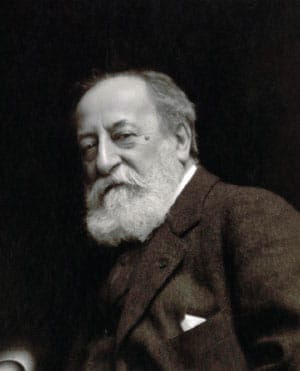
“Monsieur Saint-Saëns possesses one of the most astonishing musical organizations I know of. He is a musician armed with every weapon. He is a master of his craft as no one else is. . . . He plays, and plays with the orchestra as he does the piano. One can say no more.” So remarked the composer Charles Gounod of his fellow French composer, and in marveling over his talents, Gounod might also have noted that Saint-Saëns was a highly accomplished organist (who for two decades reigned in the loft at the Madeleine), a champion of forgotten earlier music and of contemporary composers, an inspiring teacher, a gifted writer, a world traveler, and an avid and informed aficionado of such disciplines as classical languages, astronomy, archaeology, philosophy, and even the occult sciences.
From 1861–65 Saint-Saëns taught piano at the École Niedermeyer in Paris. Reported one his students: “Apart from the technical matters on which he was very strict—purity of execution, care for sonority, quality of sound, pianistic color, phrasing, accentuation, and the style appropriate to the composer—he liked to open our minds to all that was worthy of interest, even outside music, and he stimulated our imagination by leading us on to the other arts and arousing our curiosity about everything.” He devised all sorts of clever teaching techniques, and one of his unrealized goals was to compose a group of musical portraits of animals that might amuse his charges.
Not until 1886 did he realize his plan—a pity, since one can imagine the humbling amusement his Niedermeyer pupils would have derived from finding pianists included among the various species of fauna, alongside hens and roosters, tortoises, elephants, kangaroos, and so on. He wrote Carnival of the Animals as a surprise gift to unveil at a private Shrove Tuesday (Mardi Gras) gathering organized by the cellist Charles Lebouc, whom he spotlighted in the suite’s most enduringly famous movement, The Swan. While writing his suite, Saint-Saëns sent a letter to his publisher, August Durand, apologizing for spending time on these 14 short numbers when he really should be working on his “Organ” Symphony, which was then in progress. He further informed Durand that Carnival of the Animals would not be for publication, but instead “will be one of my posthumous works.” He did allow The Swan to be published, but apart from that he held steadfastly to his prohibition until it was reversed upon his death by a stipulation in his will. The complete Carnival was therefore not heard publicly until it was presented in February 1922, on the first Shrove Tuesday after he died.
—James M. Keller
About the Artists
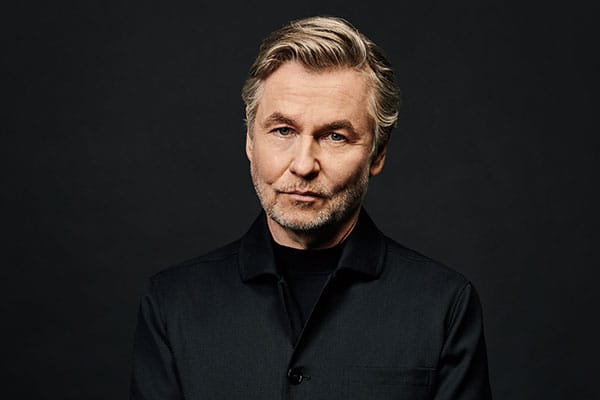
Esa-Pekka Salonen
Music Director
Known as both a composer and conductor, Esa-Pekka Salonen is the Music Director of the San Francisco Symphony. He is the Conductor Laureate of the Los Angeles Philharmonic, where he was Music Director from 1992 until 2009, the Philharmonia Orchestra, where he was Principal Conductor & Artistic Advisor from 2008 until 2021, and the Swedish Radio Symphony Orchestra. As a member of the faculty of Los Angeles’s Colburn School, he directs the preprofessional Negaunee Conducting Program. Salonen cofounded, and until 2018 served as the Artistic Director of, the annual Baltic Sea Festival, which invites celebrated artists to promote unity and ecological awareness among the countries around the Baltic Sea.
Salonen has an extensive and varied recording career. Releases with the San Francisco Symphony include recordings of Kaija Saariaho’s opera Adriana Mater, Bartók’s piano concertos, as well as spatial audio recordings of several Ligeti compositions. Other recent recordings include Strauss’s Four Last Songs, Bartók’s The Miraculous Mandarin and Dance Suite, and a 2018 box set of Mr. Salonen’s complete Sony recordings. His compositions appear on releases from Sony, Deutsche Grammophon, and Decca; his Piano Concerto, Violin Concerto, and Cello Concerto all appear on recordings he conducted himself.
Esa-Pekka Salonen is the recipient of many major awards. Most recently, he was awarded the 2024 Polar Music Prize. In 2020, he was appointed an honorary Knight Commander of the Order of the British Empire (KBE) by the Queen of England.
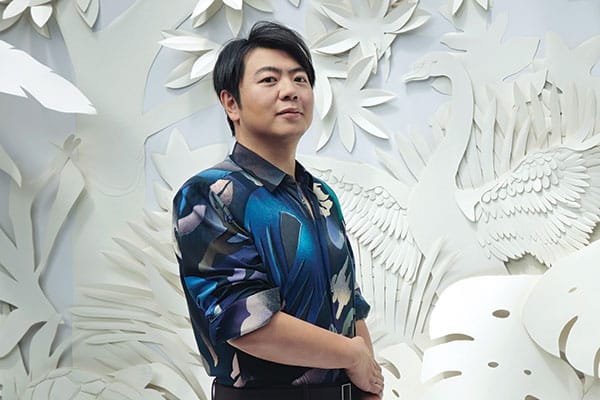
Lang Lang
Piano
As a pianist, educator, and philanthropist, Lang Lang is one of the world’s most influential and committed ambassadors for the arts in the 21st century. Equally happy playing for billions of viewers at the 2008 Olympic Opening Ceremony in Beijing or for a few hundred children in the public schools, he is a master of communicating through music.
Lang Lang performs with the world’s top orchestras, collaborating with conductors including Simon Rattle, Gustavo Dudamel, Daniel Barenboim, and Christoph Eschenbach. Known for thinking outside the box, Lang Lang has also performed with Metallica, Pharrell Williams, and Herbie Hancock. In 2008 he founded the Lang Lang International Music Foundation. In 2013 the Secretary General of the United Nations designated him a Messenger of Peace, focusing on global education.
Lang Lang started playing the piano at age three and gave his first public recital at five. He entered Beijing’s Central Music Conservatory at nine; four years later, he won first prize at the International Tchaikovsky Competition for Young Musicians. He then moved to Philadelphia to study with pianist Gary Graffman at the Curtis Institute of Music. He was 17 when his big break came: substituting for André Watts at the Gala of the Century, playing Tchaikovsky’s First Piano Concerto with the Chicago Symphony Orchestra. He became an overnight sensation. He made his San Francisco Symphony debut in October 2000 as a Shenson Young Artist.
In 2010, Lang Lang received the Crystal Award in Davos and was chosen as one of the 250 Young Global Leaders by the World Economic Forum. He holds honorary doctorates from the Royal College of Music, the Manhattan School of Music, and New York University. In December 2011 he was honored with the highest prize awarded by the Ministry of Culture of the People’s Republic of China and also received the highest civilian honors in Germany (Merit of the Federal Republic of Germany) and France (Medal of the Order of Arts and Letters). In 2016 he was invited to the Vatican to perform for Pope Francis. He has also performed for numerous other international dignitaries, including four US presidents and the leaders of many nations.

Gina Alice
Piano
Born to German-Korean parents in 1994, Gina Alice was raised in Frankfurt. She began playing the piano at the age of four, and in 2007, at age 13, she made her German television debut on the program Klassik Kids. In 2021 she was named a Steinway Artist and released her debut album, Wonderworld, on Universal/Deutsche Grammophon. Last March, her recording of Saint-Saëns’s Carnival of the Animals with Lang Lang and the Leipzig Gewandhaus Orchestra was released on Universal/Deutsche Grammophon, following concerts at Carnegie Hall and London’s Royal Albert Hall. She makes her San Francisco Symphony debut with tonight’s Gala.
In addition to her work as a pianist, Gina Alice is a gifted and versatile singer. In 2021 she performed “River of Memories” for the Chinese version of Disney’s Frozen 2, and for Lang Lang’s album The Disney Book, she recorded “When You Wish Upon a Star” from Pinocchio in Chinese, English, and Korean. Joint performances at the Hollywood Bowl and Radio City Music Hall followed shortly after. Her Disney special with Lang Lang is available on Disney+.
Earlier this year, Gina Alice was a guest on The Tonight Show Starring Jimmy Fallon. In China, her reality show, Gina’s Motel, garnered an audience of more than 300 million viewers, and on social media channels such as Weibo and Douyin (Chinese TikTok), she creates content for more than seven million followers. As a model, she has appeared in editorial spreads and cover shoots for Vogue, Harper’s Bazaar, Grazina, InStyle, and Figaro, and partnered with Dior, Guerlain, De Beers, and Roger Vivier.




